‘100 Days of Leake Street’ is a project that shows the changes on 10 different walls in a legal graffiti spot over 100 consecutive days. It is meant to reveal the necessity of free painting places, by demonstrating the energy and variety of the graffiti they attract.
Leake Street is a legal painting tunnel located underneath the former Eurostar terminal in London’s Waterloo station. It was the site of Banksy’s Cans festival in 2008 and it has been an authorised graffiti location ever since.
I started this project in June 2013 and finished it in November, after visiting the tunnel every weekday (and sometimes on weekends) for 100 consecutive days. These animated gifs show a photographic sequence of each of the walls, adding a narrative to this overwhelming agglomeration of painted layers.
Wall No. 1
Wall No. 1 is right at the entrance of the tunnel, marking the spatial boundary of tolerated graffiti. Paint on it, and you are no longer on sanctioned grounds. This makes the wall constantly disputed territory, between place managers who try to control the space by keeping it clean, and graffiti writers who never fail to take advantage of the newly offered canvas.
Wall No. 2
The turnaround on each wall in Leake Street is so frequent, that I often wondered how many layers I had missed in a 24-hour interval, how many frames I was leaving outside the rhythm of the project. For all the work that is put up every day, other layers fall into oblivion, getting buried under opaque paint. Something will always have to get covered for something new to take its place, and I found the rate of these changes to be simply spectacular.
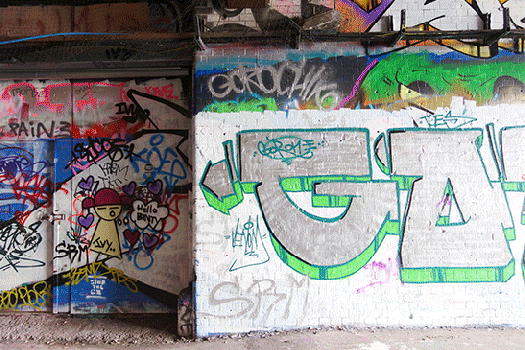
Wall No. 3
The quality of existing work is rarely decisive towards what stays and what gets painted over immediately. This canvas is always full and available at the same time, leaving behind traces and memories of previous days and offering room for new expression.
All inscriptions eventually get lost under future and future layers, with no precise record to mark their position, nothing to say “I was here”. This project attempts to become that record, and present a succession of layers in the present tense, in a permanently accurate “I am here”.
Wall No. 4
This exercise is like a short-term archaeology of graffiti, revealing yesterday’s form under today’s appearance. There is so much visual information present in Leake St at any moment, that it’s almost a challenge to conceive of the temporal changes the space goes through. Once these get revealed, the importance of this space acquires a whole new dimension.
Wall No. 5
The best thing about Leake St is its accessibility and lack of curation or censorship. In a time when the most prominent street art spots in London have become increasingly curated and muralised, Leake St is a place for anyone to paint, regardless of their capabilities or artistic skill. That is also why it’s referred to as a training ground, where there are no permits or sketches required, and the visual dialogue on the walls is open and democratic. This makes most of the work here below average in terms of stylistic or aesthetic marks, but hugely important as proof for how prolific the practice of graffiti writing is.
Wall No. 6
The changes from one day to the other are often only visible through fast and minimal additions in the form of tags or basic throw-ups. These form an essential part of the dialogue that takes place on these walls, showing the different modes and stages of graffiti writing and pointing to their importance as formative practices.
For each piece that draws your attention in these animations, there are hundreds of tags that made it possible. Some of them are visible in the same animations, and trying to spot them is one of the best thing to do while looking at these.
Wall No. 7
Each bit of wall separates one workspace from another, effectively behaving like frames in this seemingly chaotic universe. They become designated spaces for putting up work, by presenting a separate visual and physical territory with distinct characteristics of texture, material and colour. This is site specificity operating on two levels simultaneously: these works are here because they are allowed to be here, but they each get a suitable spot to occupy and stand out from. Adaptation is everywhere.
Wall No. 8
The photos that make up this project were framed in such a way as to purposefully show the different qualities of the walls, their elevations and their availability for getting painted. A corner or a door produce canvasses of radically different qualities, and this becomes apparent through the breaks in the types of work they will support. This tunnel is a very unequal space, and this makes it easier to fight for visibility. When distinct territories are not given, they can be created by painting backgrounds and demarcating one’s place from the neighbouring world.
Wall No. 9
The stories apparent on these walls are only a chapter in the life of Leake Street. Every day, hundreds of people pass through the tunnel on their way to work, using the space and feeling safer because of the constant activity. The tunnel is not just a place for display, but also for meeting and gathering, as well as offering a backdrop for daily fashion and video shoots.
This is a place whose qualities have been improved by the presence of graffiti, and it is living evidence of the positive impact graffiti can have.
Wall No. 10
Places like 5Pointz in NYC or the neighbouring undercroft at the Southbank are not only lost as graffiti destinations or safe places to paint, but there is a whole visual history that disappears with them and that cannot be replaced. What this project hopes to achieve is to make tangible the fantastic cultural activity that seems to fall into oblivion with each new day, by showing a fragment of its growth and evolution. Hundreds more interventions were made here since I stopped my daily documentation, and they all build the identity of what this place means. I can only hope the building becomes a bit more apparent through this work.
A poster form of the ‘100 days of Leake Street’ won a prize in the UCL Graduate School research image competition. It shows wall no. 4 and also contains some of the dates, for a clearer idea of the time scale of the work.

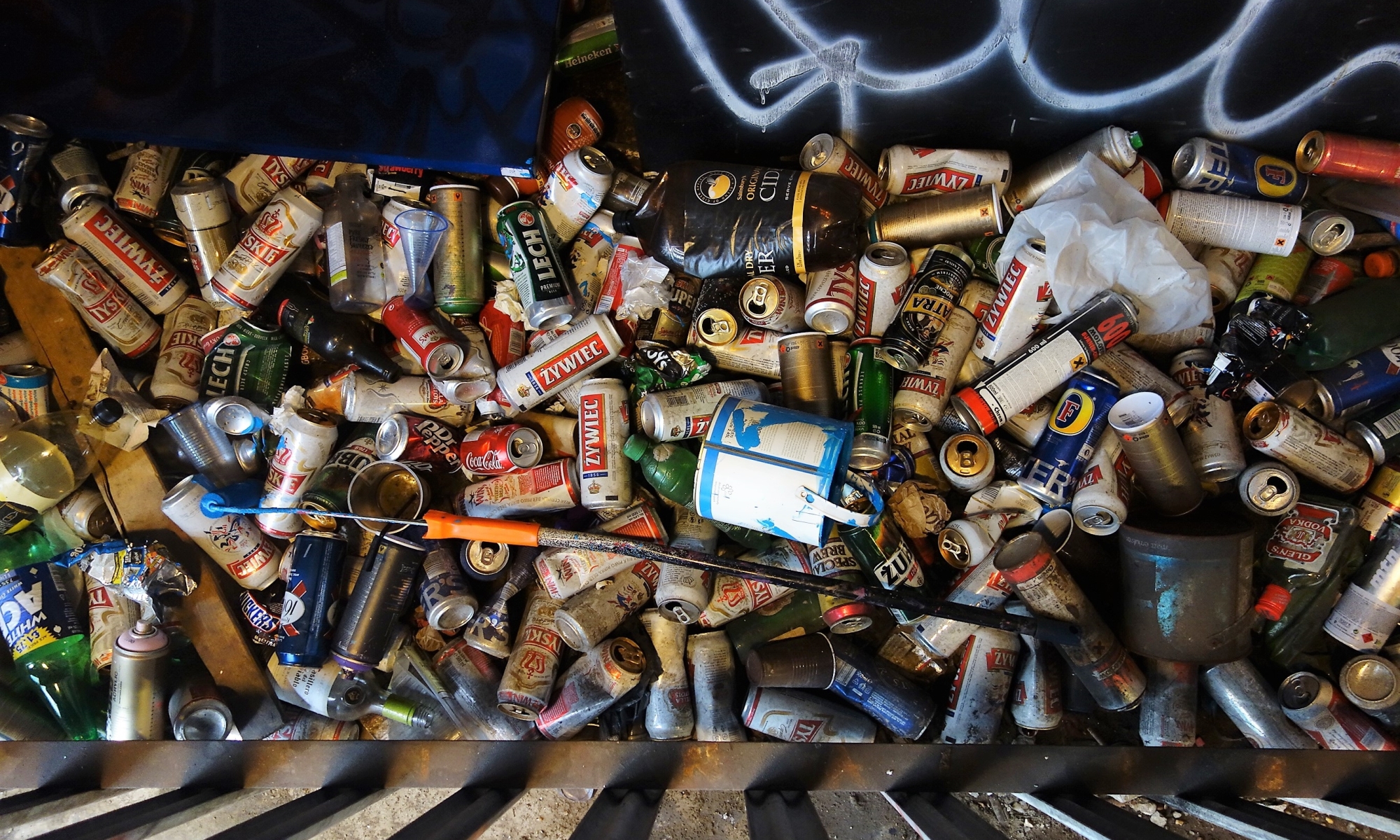
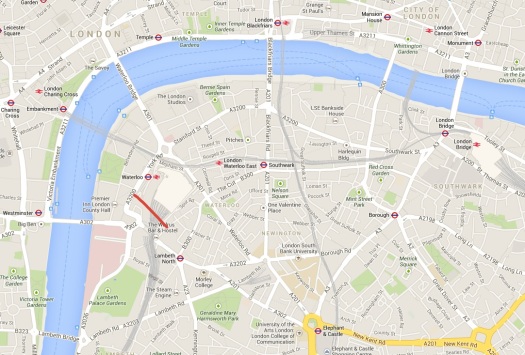
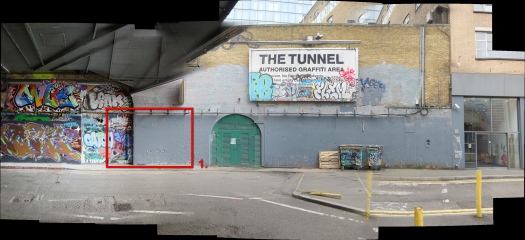
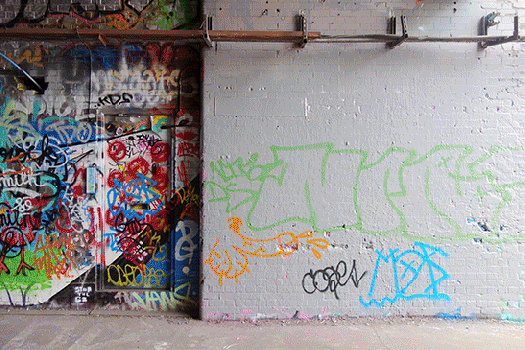
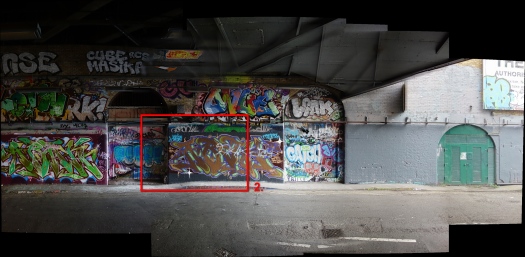
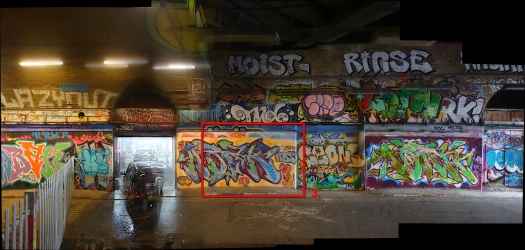
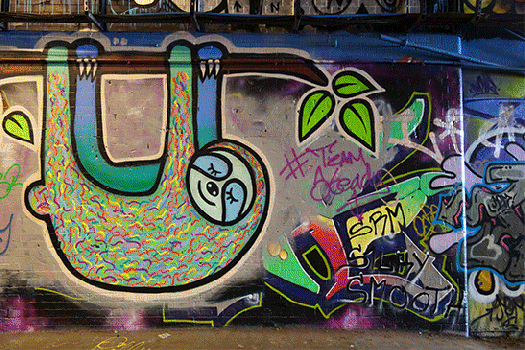

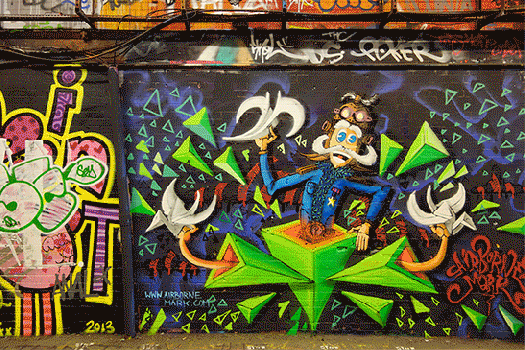

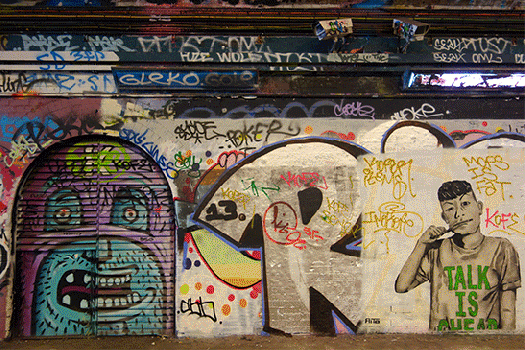
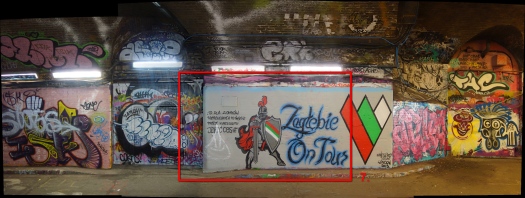
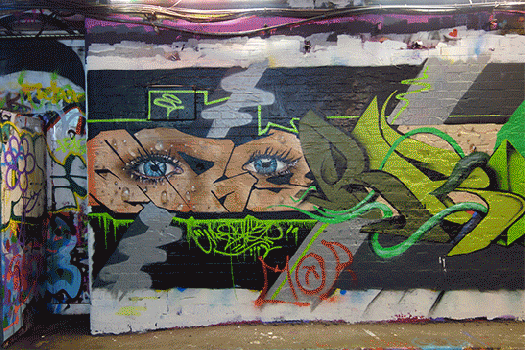
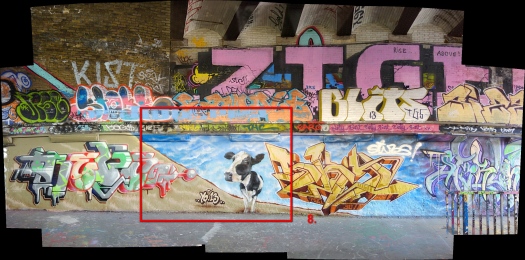
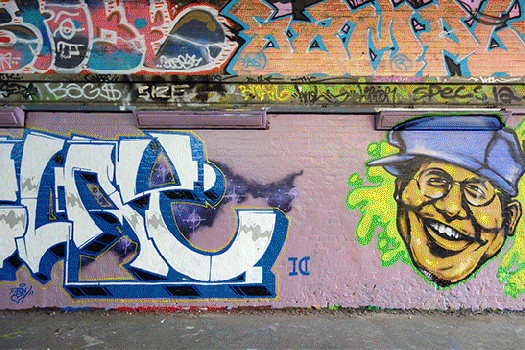
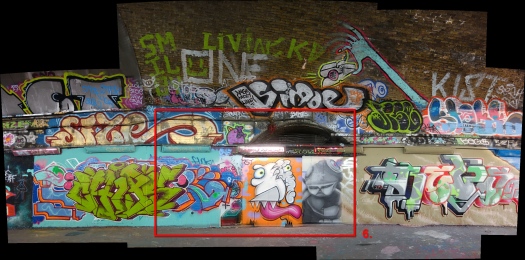
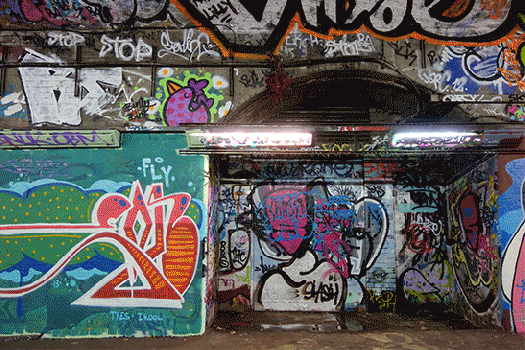
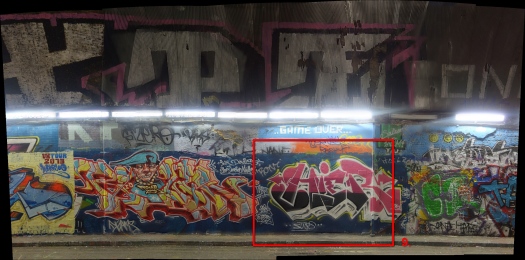
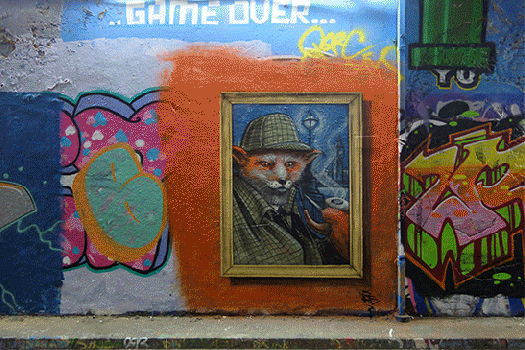
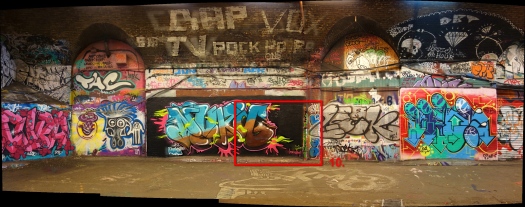
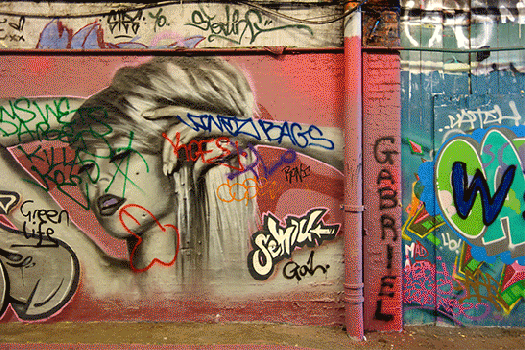
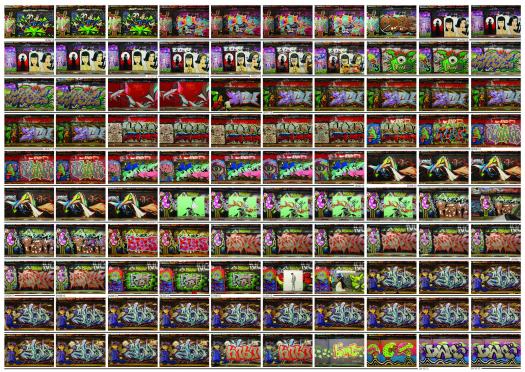

This is a colossal body of work you’ve put in to document all that graff… good job. You should check out this website http://grafarc.org/
Hey Sabina Amazing work! we reposted on our website http://www.cantbuffthis.com Let us know if you want us to remove it thanks!
What an amazing project
Really cool, thanks for sharing this! 😉
I’ve never seen anyone working on the walls so it is good to see you’re our eyes showing us that it does change over time! So thanks, Sabina.
wonderfully thorough .. ‘dedication’ readily comes to mind
What a great project idea, didnt really pay attention to them before, always thought they stay the same day by day.can’t imagine how quick the wall changes. Thanks.
Great work 🙂 check out http://graffitikings.co.uk/
My piece appears in your gif no. 6! Here you can see the pic I took… http://alone198.blogspot.co.uk/2013/09/23092013.html Nice job btw!!
This is great good to see dedication to something we all love and not seen something put together like this before